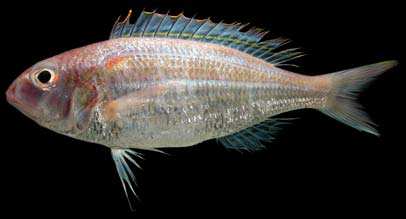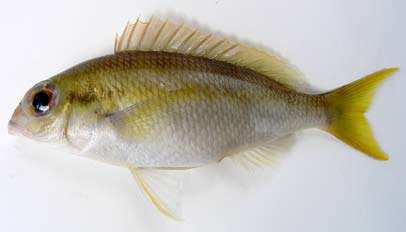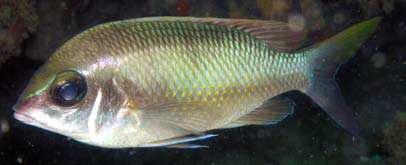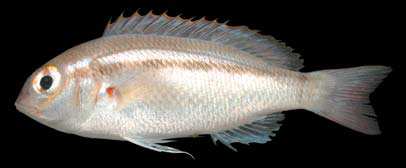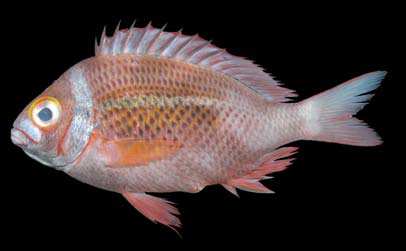NEMIPTERIDAE
Threadfin Breams and Monocle Bream
By Koichi Shibukawa and Hiroyuki Motomura
|
Medium sized (up to 35 cm), moderately elongate fishes. Head compressed; eyes moderately large; jaws subequal, or upper jaw slightly beyond lower jaw; hind margin of suborbital bone exposed; branchiostegals 6. Single dorsal fin with X spines and 9 soft rays; anal fin with III spines and 7-8soft rays; pectoral fin more or less falcate, with 14-19 soft rays (uppermost 2 rays unbranched); pelvic fin with I spine and 5 soft rays; caudal fin emarginated, lunate or forked, with filamentous tip on each or both lobes in many species. Scales ctenoid, moderate in size; cheek and operculum scaled; a pair of elongate, pointed scales at base of pelvic fin. Color: pinkish, yellowish, grayish, or brownish dorsally, turned to silvery ventrally, with various-colored vertical bands or longitudinal stripes on head and body in many species. Similar families occurring in the area. Caesionidae: dorsal fin with X-XV spines and 8-22 soft rays; anal fin with III spines and 9-13 soft rays; no elongated, pointed scales at base of pelvic fin. Haemulidae: dorsal fin with IX-XIV spines and 11-26 soft rays. Lethrinidae: anal fin with III spines and 8-10 soft rays; no scales on preopercle in Lethrinus (scaly in other genera). Lutjanidae: no elongate and pointed scales at base of pelvic fin. Remarks. Found in coral reefs and coastal to offshore shelf waters with sandy or muddy bottoms, down to about 300 m depth. Carnivorous, feed on small fishes, crustaceans, cephalopods, and polychaetes. Esteemed as food fish in many species; caught by trawls, handlines, traps and various kinds of nets; marketed fresh, dried and salted, or minced for fish balls or fish cakes. |

|
|


